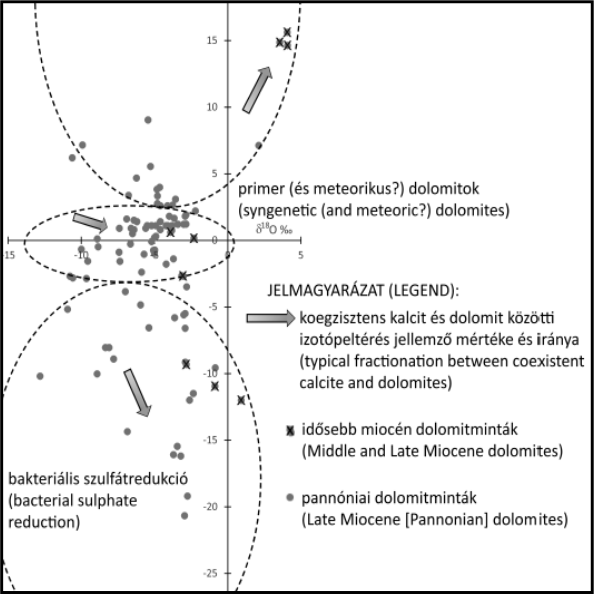The origin of Miocene ferrodolomites in the Pannonian Basin, based on their stable isotopic pattern
Abstract
In the Miocene, prevailingly siliciclastic sediments of the Pannonian Basin the interbedded dolomite layers are hardly known. These dolomites are easily distinguished from the surrounding sediments on basis of their colour and greater hardness. These are 0.1–2.0 m thick grey, dark grey, more seldom light grey or greenish grey, massive or laminated rocks. The 0.1–0.2 m thin core samples could be either concretions or lenses but the few evidences where these appear in outcrops indicate that these thin layers have lateral extension. The present short study is based on the stable isotopic analyis of 95 core samples originating from 18 coreholes drilled in the 1980s. The floodplain sedimentary settings during the Late Miocene, Pannonian periodically favoured the deposition of muddy lime or even syngenetic dolomites in ponds and lagoons. As well, the negative oxygen isotopes (≤-5‰) with close to zero carbon isotopes reflect a replenishment of the system by meteoric waters in case of a few samples. The delta slope and deep lacustrine depositional environment is also represented by some samples. The oxygen and carbon stable isotopic pattern of most of the studied dolomites indicates that the formation of these hard rocks were governed mainly by the bacterial diagenesis of the organic matter such as sulphate reduction (highly negative carbon isotope ratios) and methanogenesis (highly positive carbon isotope ratios). The isotopic pattern of the few older Miocene samples is in line with the diagenetic history, ie. they indicate formation during the methanogenesis. An accurate assessment of the sedimentary facies, sequence stratigraphy, and modern petrographical and organic geochemical analyses will be required to outline a precise model on the formation of the Miocene dolomites of the Pannonian Basin.
















